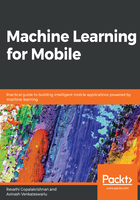
Reinforcement learning
Reinforcement learning is goal-oriented learning based on interactions with the environment. A reinforcement learning algorithm (called the agent) continuously learns from the environment in an iterative fashion. In the process, the agent learns from its experiences of the environment until it explores the full range of possible states and is able to reach the target state.
Let's take the example of a child learning to ride a bicycle. The child tries to learn by riding it, it may fall, it will understand how to balance, how to continue the flow without falling, how to sit in the proper position so that weight is not moved to one side, studies the surface, and also plans actions as per the surface, slope, hill, and so on. So, it will learn all possible scenarios and states required to learn to ride the bicycle. A fall may be considered as negative feedback and the ability to ride along stride may be a positive reward for the child. This is classic reinforcement learning. This is the same as what the model does to determine the ideal behavior within a specific context, in order to maximize its performance. Simple reward feedback is required for the agent to learn its behavior; this is known as the reinforcement signal:

Now, we will just summarize the type of learning algorithms we have seen through a diagram, so that it will be handy and a reference point for you to decide on choosing the algorithm for a given problem statement:
